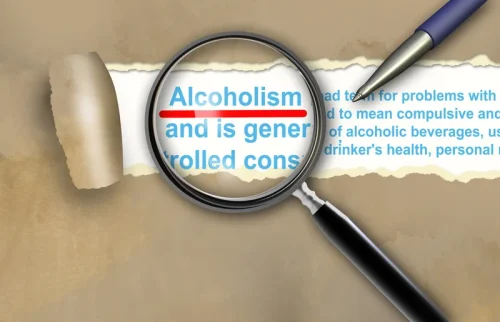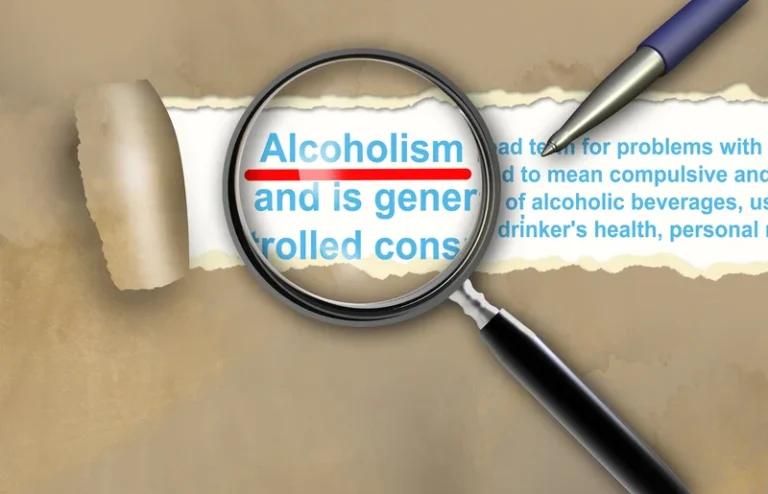Amphetamine Side Effects: Common, Severe, Long Term

Mental sharpness, focus, the ability to get more done in less time; people are increasingly desperate for all of these things, and a lot of them are turning to Adderall to get them. Acute cocaine use can lead to narrowing of the blood vessels and an increase in body temperature, pulse, and blood pressure (NIDA, 2016a) as well as fatigue (Ciccarone, 2011). The postsynaptic neuron receives messages in the form of neurotransmitters released from the presynaptic neuron, resulting in depolarization or hyperpolarization of the postsynaptic neuron membrane. If the membrane is depolarized to a certain degree, an action potential occurs that causes the neuron to release a neurotransmitter (i.e., to “send a message”).

Russia warns the United States of the risks of World War Three

Obtaining an accurate medication history for the patient may allow a diagnosis to be made independently of drug metabolite testing. Therefore, obtaining medication histories should always be a focus during the evaluation of patients who are intoxicated. Understanding the chronic physiologic effects of MA use is essential for treatment providers who serve this population.
- Like cocaine, MPH inhibits the DAT, which increases synaptic levels of DA, and this is presumed to mediate MPH’s reinforcing effects and abuse potential.
- Thus, stimulant medications do not necessarily equalize academic achievement in the typical adult with ADHD.
- Amphetamine stimulants have been used medically since early in the twentieth century, but they have a high abuse potential and can be neurotoxic.
- It has also resulted in a corresponding escalation of nonprescription stimulant use in many college students confirmed by numerous surveys.
- Greater understanding of the underlying neuronal impairments of stimulant use will aid in the development of new and more effective treatment approaches.
- Methamphetamine was developed early in the 20th century from its parent drug, amphetamine, and was used originally in nasal decongestants and bronchial inhalers.
What are the different forms of amphetamine?
“During the last few years, the number of requests for ADD evaluations has hugely increased,” Paula Stoessel, Ph.D., director of mental health services for physicians in training at the University of California, Los Angeles, David Geffen School of Medicine. “We make them medical students go through a lot before we hand out medication, but I’ve heard them talk about obtaining Adderall prescriptions in passing.” Clearly, the results emphasize the need for education about stimulants and their adverse side effects. The conclusion that methamphetamine users had cognitive deficits was based primarily on the reaction time, not the accuracy, of the results obtained during some CalCAP tasks, which suggest a motor slowing, rather than cognitive deficits. As noted earlier, if one wants to determine whether an individual’s performance is normal, a fundamental requirement is that the performance has to be compared against a normative score, taking into consideration the individual’s age and level of education.
Comparison of Efficacy: OTC Options vs. Adderall
- Notably, findings from the MTA study did not support the idea that growth deficits rebound during continuous use of stimulant medication.
- When the nucleus accumbens is functioning normally, communication among its neurons occurs in a consistent and predictable manner (Koob & Volkow, 2016).
- After the first occurrence, paranoid symptoms can be invoked by psychosocial stress, but also readily reappear after amphetamine injection.
- Talk with your health care provider or see a mental health provider, such as a doctor who specializes in addiction medicine or addiction psychiatry, or a licensed alcohol and drug counselor.
- Regular users can increasingly take more amphetamine to avoid unpleasant withdrawals.
By balancing levels of norepinephrine and serotonin, Rhodiola can enhance mood and mental clarity, making it an ideal alternative for those looking to reduce stress-induced cognitive impairment. Its ability to boost energy levels without the need for stimulants makes it an excellent choice for those experiencing symptoms of Attention Deficit Disorder or general brain fog. With minimal side effects, Rhodiola Rosea supports optimal cognitive performance, improving focus and endurance during mentally demanding tasks. Cogniflex is designed to boost both mental clarity and energy levels by targeting key brain chemicals that influence focus and memory. It helps eliminate brain fog while enhancing cognitive processes such as problem-solving and decision-making.


The formula includes clinically tested nootropics such as Citicoline and Tyrosine, which work to increase the production of essential brain chemicals like dopamine and acetylcholine, directly improving focus and motivation. With these ingredients, Vyvamind offers a holistic cognitive boost, helping individuals push through brain fog, improve mental clarity, and maintain high levels of focus over extended periods. Importantly, this supplement does all of this without the crashes, dependency risks, or jitteriness that can accompany stimulant medications like Adderall. Adderall is a prescription medication commonly used to treat Attention-Deficit Hyperactivity Disorder (ADHD). It acts as a nervous system stimulant to help increase attention span and cognitive performance. However, potential side effects and the risk of abuse are concerns with stimulant medications like Adderall.
What is amphetamine used for?

While it may not deliver the immediate effects that Vyvamind is known for, Nooceptin’s broad-spectrum formula works over time to improve mental wellbeing, making it an excellent option for those seeking sustained cognitive support. Non-stimulant ADHD medications can also be viable substitutes, offering improvement in attention and cognitive enhancers without the common side effects of stimulants. Emergency department personnel should stabilize the patient medically and assess potential danger to self and others before trying to take a history. Patients in a heightened state of arousal and experiencing persecutory perceptions may not give an accurate accounting of their current and past substance use. Information from significant others or from a reliable source can help clarify the patient’s history.
Data availability
- Patients experiencing amphetamine toxicity thus often present with anorexia, dehydration, weight loss, and insomnia.
- Unfortunately, the line between amphetamine addiction and abuse is often sometimes difficult to distinguish because of the psychological effects of this drug.
- Nevertheless, taking amphetamine long enough can create physical dependence in which the body simply cannot function normally without at least some of the drug in the system.
- Another point relevant to the above discussion is that the conclusions drawn by Johanson et al (2006) appear to conflict with those of a similar subsequent study.
- The Misuse of Drugs Act (MDA) 1971 established the system by which illicit drugs or controlled substances are classified.
When amphetamines were easy to get, Amphetamine Addiction many people used them to stay awake and to have more energy. Truck drivers, students and athletes were especially likely to abuse amphetamines. A drug or other substance is tightly controlled by the UK government because it may be abused or cause addiction.
